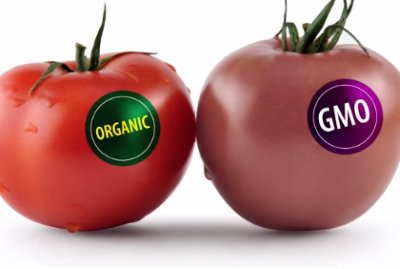At the beginning of May, the USDA published their “long-awaited draft rule implementing a groundbreaking disclosure law for foods with genetically engineered ingredients.” 1 And it’s about time because we deserve to know what’s in our food and how it’s grown (much like consumers in 64 other nations).
“When Congress passed the first-ever national GMO food disclosure law in 2016 – and blocked states from passing or enforcing their own labeling laws – lawmakers promised consumers a disclosure system that would cover more ingredients and be simple to use.”2
RELATED STORY:
However the new proposed rule:
- may exclude almost three-fourths of products with genetically engineered ingredients
- suggests requiring new and confusing, terminology and symbols for on-package disclosures
- and doesn’t provide practical solutions for consumers who need to scan a digital disclosure but don’t own a smartphone or have bad cell service
So what can you do? Be aware of the six ways the draft rule might leave you in the dark:3
1. All GMO Foods Disclosed? The draft rule does not say whether or not companies will have to disclose genetically engineered sugars and oils, or ingredients that have been created through new technologies such as gene-editing. Exempting foods made with GMO sugars and oils could exclude 70 percent of products with genetically engineered ingredients – even though Congress clearly intended for the new law to cover more products than Vermont’s first-in-the-nation state labeling law.
2. Huge Loopholes? The draft rule might also exempt foods from the disclosure requirements of the new law when 5 percent or less of the ingredients, by weight, are genetically engineered. Again, exempting thousands of products through this loophole would undermine Congress’ clear intent to increase, not reduce, disclosure.
3. Confusing Language? If companies choose to make an on-package GMO disclosure, the draft rule would require companies to use the words “bioengineered” or “bioengineered food ingredient,” not the widely known phrases “genetically modified” or “genetically engineered.” Using confusing new words or symbols will not help build consumer trust, but will sow more confusion and concern. Responsible companies that want to disclose genetically engineered ingredients in terms that consumers understand would be barred from doing so.
4. No Rules for Digital Disclosures? The draft rule provides few rules for companies that choose to disclose GMOs digitally through a QR code, creating the possibility that smartphones won’t read the digital codes consistently. It’s bad enough that many consumers will be forced to use their smartphones to have the same rights as consumers in 64 other nations. The USDA should make sure that QR codes work every time and in every store.
5. No Smartphone? A recent study by Deloitte found that nearly one in four Americans don’t own a smartphone, but the new rule does not provide comparable options for poor or elderly Americans, such as making scanners available in grocery store aisles.
6. No Cell Service? Compounding the fact that many Americans still don’t have smartphones is the fact that more than 20 million people have bad cell service. That means that it will take a long time for the GMO information to load – if it loads at all – and the text message option provided by the draft rule will be of little use if consumers don’t have cell service to send or receive texts.
RELATED STORY:
The proposed rule is open for comment for 60 days (deadline is July 3, 2018). Now is the time to let the USDA know that only full and transparent GMO disclosures are fair and just. Again, we deserve to know what’s in our food and how it’s grown. And, tell the USDA that the rule “must reject confusing words and symbols, ensure that QR codes are easy to scan, and guarantee real-world solutions for consumers without smartphones or those with poor cell service.”4












